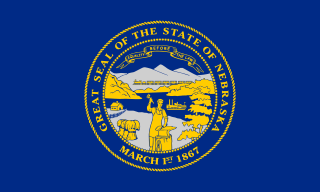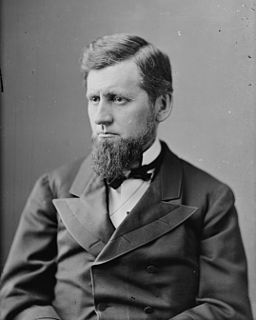| State | Incumbent | Results | Candidates |
|---|
| Senator | Party | Electoral
history |
|---|
| Alabama | John H. Bankhead | Democratic | 1907 (Appointed)
1907 (Special) | Incumbent re-elected early January 17, 1911, for the term beginning March 4, 1913. | √ John H. Bankhead (Democratic)
Unopposed |
| Arkansas | John N. Heiskell | Democratic | 1913 (Appointed) | Interim appointee retired.
New senator elected January 29, 1913.
Democratic hold. | √ Joseph T. Robinson (Democratic) 71 votes
Stephen Brundige (Democratic) 36 votes
Norwood 15 votes
Kirby 8 votes
Oldfield 1 vote
Martin 1 vote
Reid 1 vote
Taylor 1 vote |
| Colorado | Simon Guggenheim | Republican | 1907 | Incumbent retired.
New senator elected January 14, 1913, ratifying the popular selection made in 1912 state elections. [7]
Democratic gain. | √ John F. Shafroth (Democratic) 86 votes
Clyde Dawson (Republican) 11 votes
Frank Catlin (Progressive) 1 vote
Hunter (Democratic) 1 vote
In state election:
John F. Shafroth (Democratic) 47.34%
Clyde Dawson (Republican) 26.8%
Frank Catlin (Progressive) 23.48%
Mary E. Miller (Prohibition) 2.38% [10] |
| Delaware | Harry A. Richardson | Republican | 1907 | Incumbent retired.
New senator elected January 29, 1913.
Democratic gain. | √ Willard Saulsbury, Jr. (Democratic) 28 votes
H. A. Richardson (Republican) 11 votes
John G. Townsend (Republican) 5 votes
Alfred I. du Pont (Republican) 3 votes
Alexander P. Corbit (Republican) 1 vote
Simeon S. Pennewill (Republican) 1 vote
Ruby R. Vale (Republican) 1 vote |
| Georgia | Augustus Bacon | Democratic | 1894
1900
1907 (Appointed)
1907 (Special) | Incumbent ran for re-election but the legislature failed to elect.
Democratic loss.
Incumbent was then appointed to begin the term. | Augustus Bacon (Democratic) |
| Idaho | William Borah | Republican | 1907 | Incumbent re-elected January 14, 1913. | √ William Borah (Republican) 75 votes
George A. Tannahill (Democratic) 2 votes
Kirtland I. Perky (Democratic) 2 votes |
| Illinois | Shelby M. Cullom | Republican | 1882
1888
1894
1901
1907 | Incumbent lost renomination.
Legislature failed to elect.
Republican loss.
A new senator was later elected, see below. | Bernard Berlyn (Socialist)
Charles Boeschenstein (Democratic)
Frank H. Funk (Progressive)
J. Hamilton Lewis (Democratic)
McDonald (Socialist)
Lawrence Y. Sherman (Republican) |
| Iowa | William S. Kenyon | Republican | 1911 (Special) | Incumbent re-elected January 21, 1913. | √ William S. Kenyon (Republican)
D. W. Hamilton (Democratic) |
| Kansas | Charles Curtis | Republican | 1907 (Special)
1907 | Incumbent lost re-election. [7]
New senator elected January 28, 1913, ratifying the popular selection made in 1912 state elections. [7]
Democratic gain. | √ William H. Thompson (Democratic)
Walter R. Stubbs (Republican) 3 votes
Henry J. Allen (Progressive) 1 vote
In state election:
William H. Thompson (Democratic) 49.34%
Walter R. Stubbs (Republican) 43.35%
Allan Ricker (Socialist) 7.32% [12] |
| Kentucky | Thomas H. Paynter | Democratic | 1906 | Incumbent retired.
New senator elected January 16, 1912.
Democratic hold. | √ Ollie James (Democratic) 105 votes
Edwin T. Morrow (Republican) 28 votes |
| Louisiana | Murphy J. Foster | Democratic | 1900
1904 | Incumbent lost renomination.
New senator elected May 21, 1912.
Democratic hold. | √ Joseph E. Ransdell (Democratic)
Unopposed |
| Maine | Obadiah Gardner | Democratic | 1911 (Appointed)
1912 (Special) | Incumbent lost re-election.
New senator elected January 15, 1913.
Republican gain. | √ Edwin C. Burleigh (Republican) 91 votes
Obadiah Gardner (Democratic) 82 votes
E.M. Thompson (Progressive) 7 votes |
| Massachusetts | Winthrop M. Crane | Republican | 1904 (Appointed)
1905 (Special)
1907 | Incumbent retired.
New senator elected January 14, 1913.
Republican hold. | √ John W. Weeks (Republican)160 votes
Sherman L. Whipple (Democratic) 80 votes
John Graham Brooks (Progressive) 5 votes
John A. Keliher (Democratic) 1 vote
Joseph C. Pelletier (Democratic) 1 vote
Scattering 25 votes |
| Michigan | William A. Smith | Republican | 1911 | Incumbent re-elected January 14, 1913. | √ William A. Smith (Republican) 74 votes
Alfred Lucking (Democratic) 41 votes
Theodore Joslin (Progressive) 17 votes |
| Minnesota | Knute Nelson | Republican | 1895
1901
1907 | Incumbent re-elected January 21, 1913, ratifying the popular selection made in 1912 state elections. [7] | √ Knute Nelson (Republican) 178 votes
In state election:
Knute Nelson (Republican) 62.8%
Daniel Lawler (Democratic) 37.2% [14] |
| Mississippi | LeRoy Percy | Democratic | 1910 (Special) | Incumbent lost renomination.
New senator elected January 16, 1912.
Democratic hold. | √ James K. Vardaman (Democratic)
Unopposed |
| Montana | Joseph M. Dixon | Republican | 1907 | Incumbent lost re-election as a Progressive. [7]
New senator elected January 14, 1913, ratifying the popular selection made in 1912 state elections.
Democratic gain. | √ Thomas J. Walsh (Democratic)
Unopposed
In state election:
Thomas J. Walsh (Democratic) 41.17%
Joseph M. Dixon (Progressive) 32.1%
Henry C. Smith (Republican) 26.73% [15] |
| Nebraska | Norris Brown | Republican | 1907 | Incumbent lost renomination. [16]
New senator elected January 21, 1913, ratifying the popular selection made in 1912 state elections.
Republican hold. | √ George W. Norris (Republican)
Unopposed
In state election:
George W. Norris (Republican)
Ashton C. Shallenberger (Democratic) [17] |
| New Hampshire | Henry E. Burnham | Republican | 1901
1907 | Incumbent retired.
Legislature failed to elect.
Republican loss.
New senator was elected late, see below. | Robert P. Bass (Progressive)
Sherman E. Burroughs (Republican)
Clarence Carr (Democratic)
Henry F. Hollis (Democratic)
John H. Bartlett (Republican)
Edward N. Pearson (Republican)
William Swart (Independent)
Henry B. Quinby (Republican)
Gordon Woodbury (Democratic) |
| New Jersey | Frank O. Briggs | Republican | 1907 | Incumbent lost re-election.
New senator elected January 28, 1913.
Democratic gain. | √ William Hughes (Democratic) 63 votes
Frank O. Briggs (Republican) 17 votes |
| New Mexico | Albert B. Fall | Republican | 1912 (New state) | Incumbent re-elected June 6, 1912.
Legislature invalidated the election.
Incumbent then re-elected January 28, 1913. | January 28, 1913 election:
√ Albert B. Fall (Republican) 43 votes
Scattering 25 votes
June 6, 1912 election:
Albert B. Fall (Republican) 40 votes
W. H. Andrews (Republican) 2 votes
R. L. Byea (Republican) 2 votes |
| North Carolina | Furnifold Simmons | Democratic | 1901
1907 | Incumbent re-elected January 21, 1913. | √ Furnifold Simmons (Democratic) 144 votes
Cyrus Thompson (Republican) 19 votes |
| Oklahoma | Robert L. Owen | Democratic | 1907 | Incumbent re-elected January 21, 1913. [7] | √ Robert L. Owen (Democratic)
In state election:
Robert L. Owen (Democratic) 50.43%
Joseph Dickerson (Republican) 33.28%
John Wills (Socialist) 16.3% [18] |
| Oregon | Jonathan Bourne, Jr. | Republican | 1907 | Incumbent lost renomination and then lost re-election as Progressive.
New senator elected, ratifying the popular selection made in 1912 state elections. [7]
Democratic gain. | √ Harry Lane (Democratic)
In state election:
Harry Lane (Democratic) 30.07%
Ben Selling (Republican) 28.79%
Jonathan Bourne, Jr. (Progressive) 19.41%
Benjamin Ramp (Socialist) 8.31%
A. E. Clark (Progressive-WI) 8.3%
B. Lee Paget (Prohibition) 5.13% [19] |
| Rhode Island | George P. Wetmore | Republican | 1894
1900
1907 (No election)
1908 (Special) | Incumbent retired.
New senator elected January 21, 1913.
Republican hold. | √ LeBaron B. Colt (Republican) 88 votes
Addison P. Munroe (Democratic) 42 votes
George W. Parks (Progressive) 7 votes |
| South Carolina | Benjamin Tillman | Democratic | 1894
1901
1907 | Incumbent re-elected January 28, 1913. | √ Benjamin Tillman (Democratic)
Unopposed |
| South Dakota | Robert J. Gamble | Republican | 1901
1907 | Incumbent lost renomination. [21]
New senator elected January 22, 1913.
Republican hold. | √ Thomas Sterling (Republican) 97 votes |
| Tennessee | Newell Sanders | Republican | 1912 (Appointed) | Interim appointee retired.
New senator elected January 23, 1913.
Democratic gain. | √ John K. Shields (Democratic) 69 votes
Charles T. Cates, Jr. (Independent Democratic) 61 votes |
| Texas | Rienzi Johnston | Democratic | 1912 (Appointed) | Interim appointee retired.
New senator elected January 28, 1913.
Democratic hold. | √ Morris Sheppard (Democratic)
Unopposed |
| Virginia | Thomas S. Martin | Democratic | 1893 (Early)
1899 (Early)
1906 | Incumbent re-elected January 24, 1912. | √ Thomas S. Martin (Democratic)
Unopposed [23] |
| West Virginia | Clarence Watson | Democratic | 1911 (Special) | Incumbent lost re-election.
New senator elected January 28, 1913.
Republican gain.
Winner took seat late. | √ Nathan Goff Jr. (Republican) 60 votes
Clarence W. Watson (Democratic) 43 votes
Robert W. Dailey (Democratic) 1 vote
John W. Davis (Democratic) 1 vote
John W. Hamilton (Democratic) 1 vote |
| Wyoming | Francis E. Warren | Republican | 1890
1893 (Lost)
1895
1901
1907 | Incumbent re-elected January 28, 1913. | √ Francis E. Warren (Republican) 45 votes
John B. Kendrick (Democratic) 38 votes |



















